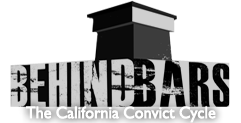The scene sparkled with shades of a veritable human rainbow. Under a picture-perfect California sky, people of all colors and backgrounds danced and laughed, smiled and listened to music.
But many of them had seen a darker place, a place where races are separated by lines so rigid, breaching them could be deadly.
“You have gangs behind the walls in prison,” said Jesse Reed, a smiling, effusive Richmond resident who spent 25 years in California prisons before his 2009 parole. “And you just can’t cell with people of other races, can’t live with them.”
Reed spoke between singing songs. His band, Redemption Gospel Group, was founded by a handful of prisoners in San Quentin in the early 1990s.
For decades, California corrections officials have housed inmates with others of their race in prison reception centers. The theory behind the practice was to reduce racial violence among race-based prison gangs. As integration in other aspects of society has become more common, prison receptions centers in California and a handful of other states remained exceptions.
Then in 2005, the U.S. Supreme Court remanded the issue back to lower courts with directions to apply due “scrutiny” to any race-based policies.
Now, California’s prison cells look set for a gradual transformation.
At the outdoor festival in Richmond’s Nevin Park in early June, former inmates and volunteers with some experience with the prison system spoke openly about race, and the prospects of integrating a system that has been divided along racial lines.
Kellis Love, who has volunteered at San Quentin State Prison as a Christian services provider, noted that there are rare occasions when various races mix harmoniously behind the prison walls.
“In chapel, you see people of all races in prayer together,” Love said. “Afterward, they go back to their own cliques, but while worship they are one.”
Kevin Kemp spent 1984 to 2003 in California’s prisons, the majority of the time in San Quentin. Kemp, 50, was convicted of second-degree murder in a drug-related shooting in the early 1980s. Kemp, who is African American, believes that segregation in cells and reception centers has intensified racial hatred and empowered gangs while not reducing violence.
“I think the idea of integration is great, absolutely,” Kemp said. “There may be some difficulties early on, but over time you’re going to see the divisions and the frictions go down, because most guys who come into prison don’t feel this racism personally, they just adapt to a racist system on the inside.”
California has fully implemented its integrated housing program at three of its 30 men’s prisons, according to California Department of Corrections spokeswoman Terry Thornton. A fourth facility, Folsom State Prison, is in the process of integrating its housing units this year.



